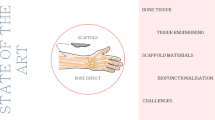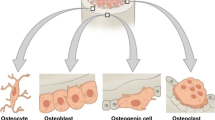Abstract
Abstract: The transplantation of human allograft for restoration and filling of cortical bone defects is well known. Our aim was an experimental investigation of the mechanical stability of the often used femoral head spongiosa depending on the caliber and extent of the allograft. To evaluate the orientation of the trabecular structures of the femoral head and relate this data to its mechanical properties, morphometric studies were combined with mechanical tests of cancellous bone specimens. The mechanical examination of the allograft was done following the compression test according to DIN 50106. We examined 36 human unfixed hip joint spongiosa cylinders with a height of 11 mm and a diameter of 24 mm. We took three specimens from each femoral head. We compressed the allograft at a constant velocity of 0.017 mm/sec. We calculated the maximum compression strength, the yield point and the Young’s modulus. We also examined 12 parallelepipedic specimens with (17 × 17 × 51 mm) for morphometric analysis and loading in the direction of the primary compressive group (PCG), as well as perpendicular loading and at an angle of 45°. We found divergent mechanical stabilities. None of the femoral heads showed comparable compressive strength. There was no position dependency of the strength of the samples. No relation between optical appearance and strength was found. We found a value for the lower compressive strength, which can be used for calculation as a basic value for safe constructions. Furthermore we tested the well known dependence of strength on the direction of the trabecular structure. We found a strong relationship between strength and load direction on the preferred direction of the trabecular structure. The sole recommendation resulting from our investigations is to rely on the lowest compressive strength for all preoperative planning. Relying on higher compressive strength by using the theoretical predicted areas of higher strength is hazardous since we found no correlation between position of sampling and strength. The size of our samples is important, because of the fact that different sizes of the samples might cause different failure mechanisms in the samples. The preparation of the femoral head spongiosa should be done according to the primary compressive group of the trabecular structure.
Similar content being viewed by others
Author information
Authors and Affiliations
Corresponding author
Rights and permissions
About this article
Cite this article
Birnbaum, K., Sindelar, R., Gärtner, J.R. et al. Material properties of trabecular bone structures. Surg Radiol Anat 23, 399–407 (2002). https://doi.org/10.1007/s00276-001-0399-x
Received:
Accepted:
Issue Date:
DOI: https://doi.org/10.1007/s00276-001-0399-x




